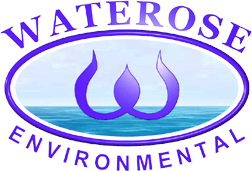 | ||||||
| Articles | Projects | Resume | Cartoons | Windsurfing | Paintings | Album |
Sustainable Development Series:
The Vancouver Island Land Use Plan

by Waterose
The Vancouver Island Land Use Plan
This brief is in response to the request from the Land Use Co-ordination Office (LUCO) for public review and comments on the reports released in November, 1997 regarding the Regional Land Use Plan (LUP) for Vancouver Island. The LUP framework is built on the categorisation of three types of LUP zones.
These zones are:
- Special management zones (SMZ) which require sensitive planning to protect special environmental values such as wildlife and biodiversity, as well as cultural and recreational values;
- Enhanced development zones (EDZ) which are to be managed to produce higher volumes and values of timber while respecting environmental protection standards of the Forest Practises code; and
- General management zones (GMZ) which are to be managed under the standard integrated resource management strategies of the Forest Practices Code (LUCO Internet, 1998).
This brief examines some of the strengths, weaknesses, opportunities, and threats of the LUP. Overall, the primary strength is the recognition that LUP is essential to the future of the Island, from an environmental, social and economic perspective. The primary weakness is that LUP is not legislated and consequently lacks enforceable laws and regulations. Furthermore, the absence of legislation means that there is no opportunity for setting precedence through case law or amendment of legislation and regulations. The LUP relies too heavily on the Forestry Practices Code (FPC) for legislative credulity. The optimum solution is to draft LUP legislation and publish a white paper for public discussion and comments through public hearings. A possible rebuttal to this proposed solution is that the implementation of new legislation is lengthy and cumbersome; however, the LUP process was initiated in 1994 and is lagging to completion due to unresolved issues and the complexity of the LUP (Bones, 1998). The LUP process is the successor to the Commission on Resources and the Environment (CORE) which was unsuccessful in obtaining concensus for Vancouver Island (Thompson, 1998). CORE was unsuccessful on Vancouver Island because the multi-stakeholders were not able to achieve concensus on a number of issues, most notably, the forestry issue (Burrows, 1994). The forestry industry walked away from the negotiating table and consequently a LUP was not achieved.
The LUP relies heavily on the FPC for the levels of anthropogenic activities and impacts in the respective zones. This is most notable in the EDZ, and the GMZ. The GMZ is not clearly defined from the SMZ.
The SMZ provide the maximum level of environmental protection with the lowest level of economic activity. The SMZ recognises the need for the protection of biodiversity and the maintenance of ecosystem integrity. The ancient coastal temperate rainforests of Vancouver Island and the indigenous species are unique and endangered according to the extensive research completed by the Sierra Club (Smith, 1998). One major downfall of the SMZ is the minimal land area size of these zones which comprise only eleven per cent of the LUP area and six per cent of the Vancouver Island (LUCO Internet, 1998). The SMZ still permit economic activity including forestry, mining, aquaculture, and forest cutbacks; so, where is the protection? Furthermore, the report recommends that the SMZ become higher level forestry zones under the FPC, similar to the GMZ.
The GMZ are to be managed according to the current practices of the FPC which means business as usual. This is probably only because the quality of land in these zones does not support high intensity forestry. The GMZ represent twenty-five per cent of the land area of Vancouver Island and forty-three per cent of the LUP area. Business as usual under the FPC means that the forestry resources will continue to be harvested based on the annual allowable cut; we have already clear-cut seventy-three per cent of the forests on Vancouver Island (Smith, 1998). From an environmental perspective, this rate of extraction is ecologically unsound because of the extensive damage to the ecosystem including the soils, the fungi root network system that is symbiotic with the mature trees, and the other plants, animals, and fish that live in the ecosystem. Furthermore, BC timber has unique qualities that are due to the characteristics of this biogeoclimatic region. BC timber has the combined quality of strength and length; these combined qualities are not found elsewhere in the world. The current market practices of timber extracted from Vancouver Island do not reflect the true value of the high quality of these trees (Travers, 1998). The B.C. forest economy is based on an administrate price system which artificially determines the selling price of a log; a price that is based on a global market that fluctuates. The BC solution to compete on the global market and changing market prices is to mechanise and cut more trees more efficiently. Ironically, this technocratic solution is directly responsible for economic depression in the BC forestry industry which is usually measured by the number of direct and indirect jobs associated with the industry. While the GMZ do not support high intensity forestry, the EDZ do.
The EDZ are the most controversial zones because they permit the highest rate of harvest in the richest forested areas. The EDZ represent forty-six percent of the LUP area and twenty-seven per cent of the Vancouver Island. The LUP states that through the monitoring of watersheds', biodiversity will be maintained despite increased harvesting. Furthermore, the EDZ permit harvest rates that exceed those of the FPC and provide for the implementation of intensive silviculture. It is unlikely that preservation of biodiversity will be achieved through accelerated extraction of timber.
The extraction of timber, in the GMZ and the EDZ combined, mean that almost 90% of the LUP is dedicated to forest extraction at either the current or higher rates of extraction. This is characteristic of the BC forestry industry; mechanise, cut more, and cut faster. The LUP initiative followed on the heels of the CORE process that failed due to the forestry issue. Giving consideration to the focus of LUP on planning for the extraction of timber in these quantities, LUP would more appropriately be described as a timber extraction document. This document would be more appropriately name "How to Extract the Remaining Forestry Resources on Vancouver Island".
While the LUP claims to encompass resource management on Vancouver Island, it falls short as a coastal zone management plan. The inclusion of the management of aquaculture appears to be an afterthought and is a shortcoming of the LUP.
While the LUP is fraught with shortcomings and weaknesses it still remains a valuable opportunity to devise a LUP for Vancouver Island rather than a timber extraction plan. A good coastal zone management plan must include all resources in a sustainable development document. The most significant threat to LUP is the loss of public interest. This may be attributable in part to the economic downturn in the BC forestry industry. The ultimate irony is that the solution proposed under the LUP to increase rates of harvest will exacerbate the problem. A better solution is to ultimately change how the forestry industry does business. A market driven mechanism that uses community selective logging and a fair market value price for BC timber would help the BC forestry industry more than this LUP plan and revitalise public interest. This could be an opportunity to revitalise the BC economy.
A second threat to LUP is the lengthy time to attain closure. The attitude of the participants is such that the primary objective has changed from creating a viable land use plan to meeting a dead line date. The consequence will be the implementation of LUP that facilitates accelerated forest harvest rates with no legal recourse to protect the remaining old growth forests.
Despite the time and costs already invested in LUP, and the desire to expedite closure, the best solution to achieve environmental, social, and economic is to shift to a legislative vehicle. Legislation is necessary to enforce and modify the plan alongside with sustainable development. In the interim, the forestry industry must plan a new global market strategy to change forestry practices in B.C. A revised LUP must encompass the needs of all users of the resources on Vancouver Island to become an effective coastal zone management document rather than a timber extraction document.
References:
Written for Royal Roads University ES311 Sustainability Lecture Series: Ecosystem Health and the EnvironmentBones, J. February 23, 1998. Seminar. Land Use Planning on Vancouver Island. Royal Roads University, BC.
Burrows,M. 1994. Dealing with Conflicts between Different World Views and Special Interest in Creating Social Change. in Perspectives on the Environment: Creating a Sustainable Society. Ed. by Valentin Schaefer. for the Ministry of Environment, Lands and Parks, and the Ministry of Skills, Training and Labour. Centre for Curriculum and Professional Development. Douglas College, Vancouver, BC. Pp. 69-95.
LUCO Internet. 1998. Resource Management Zones for Vancouver Island. Available at URL: http://www.luco.gov.bc
Mid-Coast, 1997. Cut and Run. Sierra Club of BC. Vancouver, BC.
Smith, M. January 19, 1998. Seminar. Ancient Rain Forests in BC. Royal Roads University. Victoria, BC.
Thompson, D. January 13,1998. Seminar. Land Use Planning in BC. Royal Roads University. Victoria, BC.
Travers, R. January 26, 1998. Seminar. New Roots for Forestry. Royal Roads University. Victoria, BC.
Return to Index of Articles

 email Waterose
email Waterose
Please Sign My Guestbook
Please View My Guestbook

| Articles | Projects | Resume | Cartoons | Windsurfing | Paintings | Album |
 | ||||||